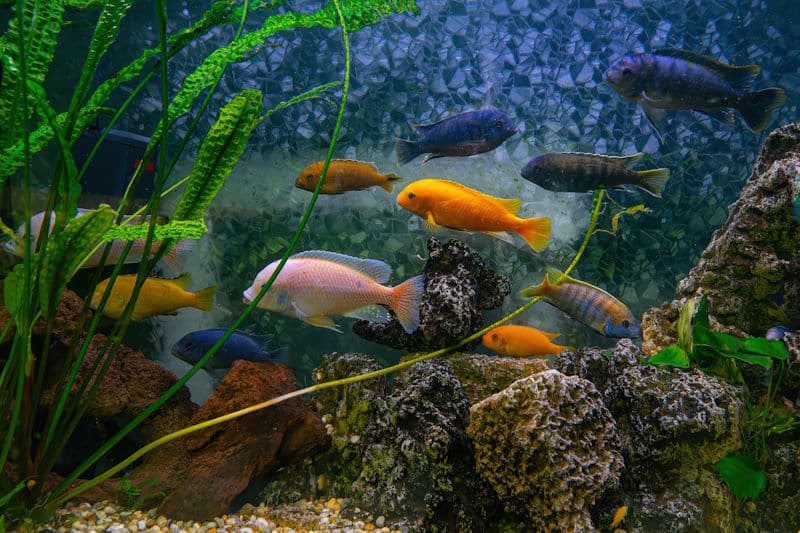
Mangroves in freshwater tanks? It might sound unconventional, but the results can be nothing short of astonishing.
Mangroves, typically associated with coastal and brackish environments, bring a wealth of benefits when introduced to freshwater aquariums.
Whether you’re a seasoned aquarist or just getting started, understanding what happens when you add mangroves to a freshwater tank can open up a whole new world of possibilities.
The Surprising Adaptability of Mangroves
Mangroves in Freshwater?
Mangroves are well-known for thriving in saltwater and brackish conditions, but they are incredibly adaptable. When introduced to freshwater tanks, they can adjust and flourish, bringing their unique qualities to the ecosystem.
Pros vs. Cons of Adaptability
✅ Pros: Mangroves’ ability to adapt to freshwater environments allows aquarists to experiment with diverse setups, enhancing the overall tank environment.
❌ Cons: Without proper acclimation, mangroves may initially struggle in a freshwater setup. Patience and careful observation are key to their success.
This adaptability showcases the resilience of mangroves, making them a versatile choice for various aquatic setups.
Natural Filtration That Works Wonders
The Power of Mangrove Roots
One of the most incredible aspects of adding mangroves to a freshwater tank is their natural filtration capability. The roots of mangroves absorb excess nutrients, such as nitrates and phosphates, which can otherwise lead to poor water quality.
Good vs. Bad Filtration
✅ Good: With mangroves acting as natural filters, there’s a significant reduction in the need for chemical filtration. This leads to a more balanced and sustainable environment.
❌ Bad: Tanks without such natural filtration methods may require frequent maintenance and chemical treatments to maintain water quality.
The result? A cleaner, healthier tank that requires less intervention from you.
Creating a Unique Habitat for Fish and Invertebrates
Shelter and Security
Mangroves don’t just filter the water—they create a unique mangrove habitat that can make your freshwater tank stand out. The intricate root systems provide shelter and hiding spots for fish and invertebrates, mimicking their natural environment.
Pros vs. Cons of Habitat Creation
✅ Pros: Offering natural hiding spots helps reduce stress for tank inhabitants, promoting natural behavior and improved health.
❌ Cons: Without such features, fish may feel exposed and stressed, leading to decreased activity and overall well-being.
Mangroves help recreate a more authentic and engaging environment, benefiting both the fish and the observer.
🛑 If you’re interested in the specific lighting needs of mangroves, check out our detailed guide on Choosing the Right Lighting for Red Mangroves in Aquariums.
Oxygenation Benefits You Didn’t Expect
Mangroves and Oxygen Levels
Mangroves play a role in oxygenating the water, which is crucial for the health of the tank’s inhabitants. Their leaves and roots work together to ensure that oxygen levels remain stable, contributing to a thriving ecosystem.
Good vs. Bad Oxygenation
✅ Good: Increased oxygenation supports not only the fish but also the beneficial bacteria that are essential for maintaining a healthy tank.
❌ Bad: Poor oxygen levels can lead to fish stress and the potential for harmful bacteria to flourish, making the tank difficult to maintain.
With mangroves, there’s a boost in oxygen levels, making the environment more conducive to aquatic life.
Aesthetically Pleasing and Functional
The Visual Impact of Mangroves
Adding mangroves to a freshwater tank isn’t just functional—it’s beautiful. The striking contrast between the lush green leaves and the tank’s aquatic environment creates a visual spectacle that can elevate the aesthetics of any aquarium.
Pros vs. Cons of Aesthetic Appeal
✅ Pros: A visually appealing tank with mangroves can become a focal point in any room, offering both beauty and a conversation starter.
❌ Cons: Without such natural elements, tanks may appear dull and uninspired, lacking that “wow” factor.
The addition of mangroves can transform a standard freshwater tank into a vibrant and dynamic display.
Educational Opportunities
Learning with Mangroves
For those interested in learning more about aquatic ecosystems, mangroves provide a fantastic opportunity. Observing how they interact with the environment can offer insights into the importance of these plants in nature.
Good vs. Bad Educational Value
✅ Good: Mangroves offer a hands-on learning experience about plant biology, aquatic ecosystems, and environmental sustainability.
❌ Bad: Without such educational components, the tank may miss out on opportunities to inspire curiosity and learning.
Mangroves serve as living examples of the delicate balance in nature, making them perfect for educational purposes.
Common Mistakes to Avoid
When adding mangroves to a freshwater tank, it’s easy to make a few common mistakes. One of the biggest is failing to acclimate the plants properly. Mangroves need time to adjust to freshwater conditions, so rushing the process can lead to poor growth or even plant death.
Another mistake is neglecting the roots. Mangrove roots need to be submerged in water while the plant itself remains above the surface. Ensuring the roots are properly placed in the substrate and the plant is securely anchored is vital.
🛑 For more tips on avoiding common pitfalls, refer to our post on Common Mistakes to Avoid When Growing Red Mangroves in Aquariums.
Practical Tips for Success
Start with Healthy Mangroves
Success with mangroves in a freshwater tank starts with selecting healthy plants. At Save Mangroves Nursery, we provide high-quality red mangroves that are ready to be added to any tank. These plants are carefully nurtured and shipped to all 50 US states, ensuring they arrive in perfect condition.
For first-time customers looking to try out mangroves, we offer 5 Free Mangrove Plants. Just cover the shipping cost, and enjoy the benefits these incredible plants bring to your aquarium.
Proper Acclimation is Key
When introducing mangroves to a freshwater tank, gradual acclimation is crucial. This allows the plants to adjust to the new environment without stress, ensuring they thrive.
The Long-Term Benefits
Low Maintenance
Once established, mangroves are surprisingly low-maintenance. Their natural filtration and oxygenation capabilities mean less work for you, making them an ideal choice for both beginners and experienced aquarists.
Pros vs. Cons of Maintenance
✅ Pros: Reduced algae growth and improved water quality lead to less frequent cleaning and more time to enjoy the aquarium.
❌ Cons: Tanks without such natural helpers may require more regular maintenance and intervention to keep the water clean.
Mangroves simplify the process of maintaining a healthy tank, allowing for more enjoyment and less hassle.
Adding mangroves to a freshwater tank is a game-changer. Their adaptability, natural filtration, oxygenation, and aesthetic appeal make them an excellent choice for anyone looking to enhance their aquarium.
How Do I Choose My Very First Plant?
So you have learned about the incredible benefits of adding mangrove plants to your tank, but you still don’t know which exact plant to add to your specific tank size?
Don’t worry, because we’ve created an easy Step-by-Step guide to help you with your selection process.
Click the button below to find out which plant is perfect for your aquarium.

 Cart is empty
Cart is empty 
